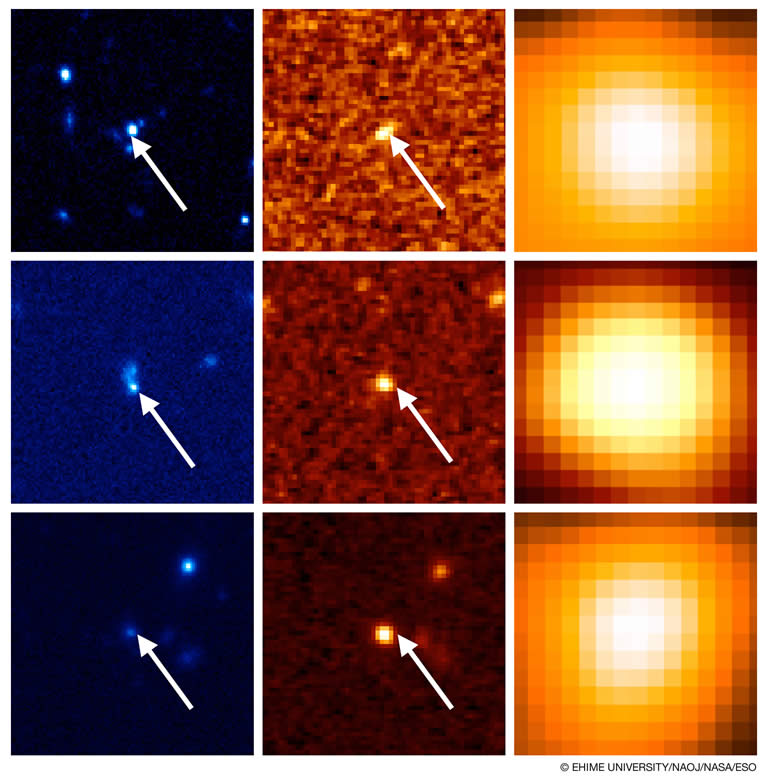Discovering Dust-Obscured Active Galaxies as They Grow
| Science
A group of researchers from Ehime University, Princeton University, and the National Astronomical Observatory of Japan (NAOJ) among others has performed an extensive search for Dust Obscured Galaxies (DOGs) using data obtained from the Subaru Strategic Program with Hyper Suprime-Cam (HSC). HSC is a new wide-field camera mounted at the prime focus of the Subaru Telescope and is an ideal instrument for searching for this rare and important class of galaxy. The research group discovered 48 DOGs, and has measured how common they are. Since DOGs are thought to harbor a rapidly growing black hole in their centers, these results give us clues for understanding the evolution of galaxies and supermassive black holes.

This research will be published on October 25, 2015 in the Publications of the Astronomical Society of Japan (PASJ) Subaru special issue (Toba et al. 2015, "Hyper-luminous Dust Obscured Galaxies discovered by the Hyper Suprime-Cam on Subaru and WISE", PASJ, Vol. 67, Issue 5 ).
Link
- Discovering Dust-Obscured Active Galaxies as They Grow
- Online version of this research paper: Hyper-luminous dust-obscured galaxies discovered by the Hyper Suprime-Cam on Subaru and WISE (PASJ)